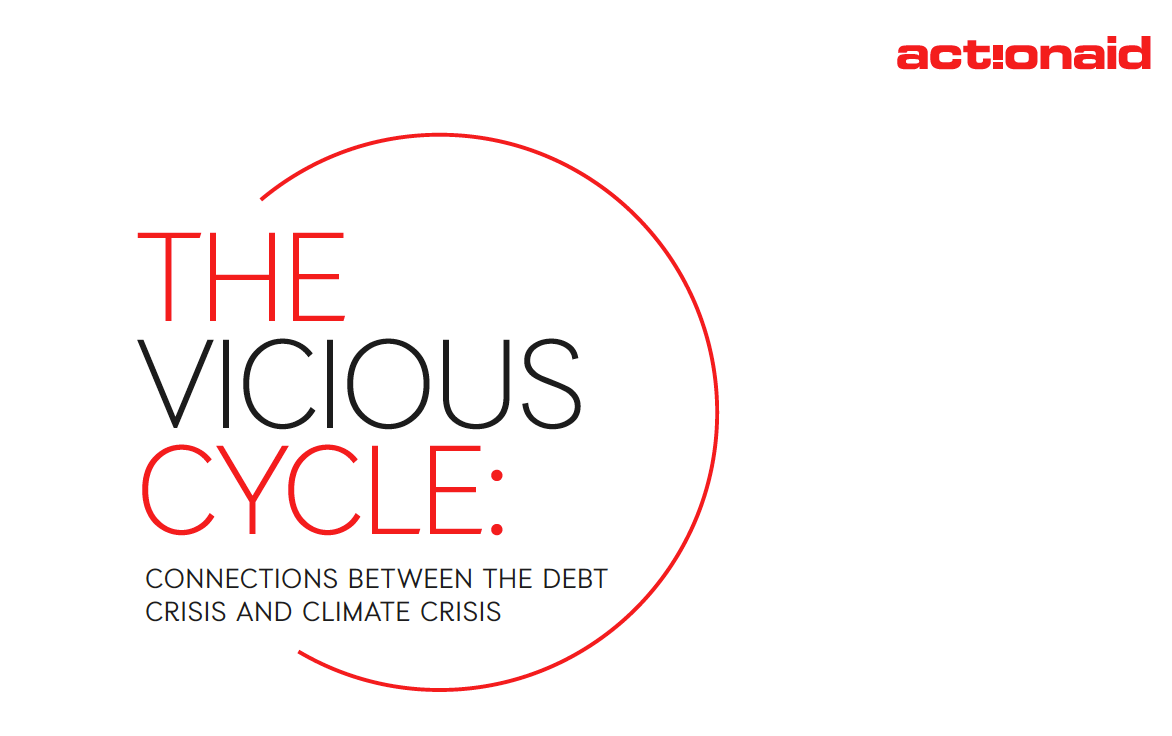The Vicious Cycle

The Vicious Cycle: Connection Between the Debt Crisis and Climate Crisis
The short policy briefing: The Vicious Cycle which documents the connections between the climate crisis and the debt crisis. This is based on new data analysis conducted by ActionAid that shows:
- 93% of the top-third most climate vulnerable countries are in debt crisis or at significant risk of a debt crisis.
- Over 60% of the most climate vulnerable countries are already spending so much money in servicing their debt that they are likely to be cutting investment in education, health and climate adaptation.
ActionAid’s analysis shows that the debt crisis accelerates the climate crisis – and that the climate crisis leads to deeper debt crises – in a vicious cycle. Countries in significant debt have to raise foreign currency quickly and this forces them to pursue an export-oriented economy - extracting fossil fuels and other natural resources or investing in industrial agriculture such as palm oil or soybeans. Such investments actively contribute to the climate crisis, but governments cannot pursue more sustainable alternatives like renewables or supporting smallholders and agroecology because they need to earn dollars or other foreign currencies. Countries in debt are also subjected to coercive policy advice and often loan conditions from the IMF that drive austerity, forcing cuts in public spending that triply disadvantage women and girls and leave States with even less capacity to adapt to the climate crisis or pursue a just transition.
The vicious debt-climate cycle works in other ways. The most climate vulnerable countries are of course the most likely to face climate-related disasters – after which they need to borrow money to recover and rebuild. Their very-vulnerability to climate disasters makes these countries a high risk for creditors - which mean these countries can only borrow at high interest rates. Each climate-related disaster effectively adds to their disproportionate debt burden.
Given these climate-debt connections, it is mad that two-thirds of global climate finance comes in the form of loans not grants – and the main propositions on the table at the IMF / World Bank Spring Meetings involve even more loan based finance. Rich countries in the global North are recognised as responsible for most historic climate change. How can these rich countries pay their ‘climate debt’ to countries in the Global South through giving loans that will further indebt countries that are already facing a debt crisis – especially when we know that debt is compelling countries to make investments that accelerate the climate crisis? The contradictions are astonishing!
The Vicious Cycle offers ways to break the cycle with clear alternatives to loan-based climate finance. National and global action on tax reform could be transformative, through windfall taxes, wealth taxes and financial transaction taxes. The time is right to change global tax rules and how they are enforced, especially following the UN vote in 2022 to move tax rule making from the OECD to the UN. There is also a need to see changes in the standard dialogue between the IMF and Ministries of Finance - to make bold and progressive action on tax reform a priority for accelerating progress on sustainable development.


